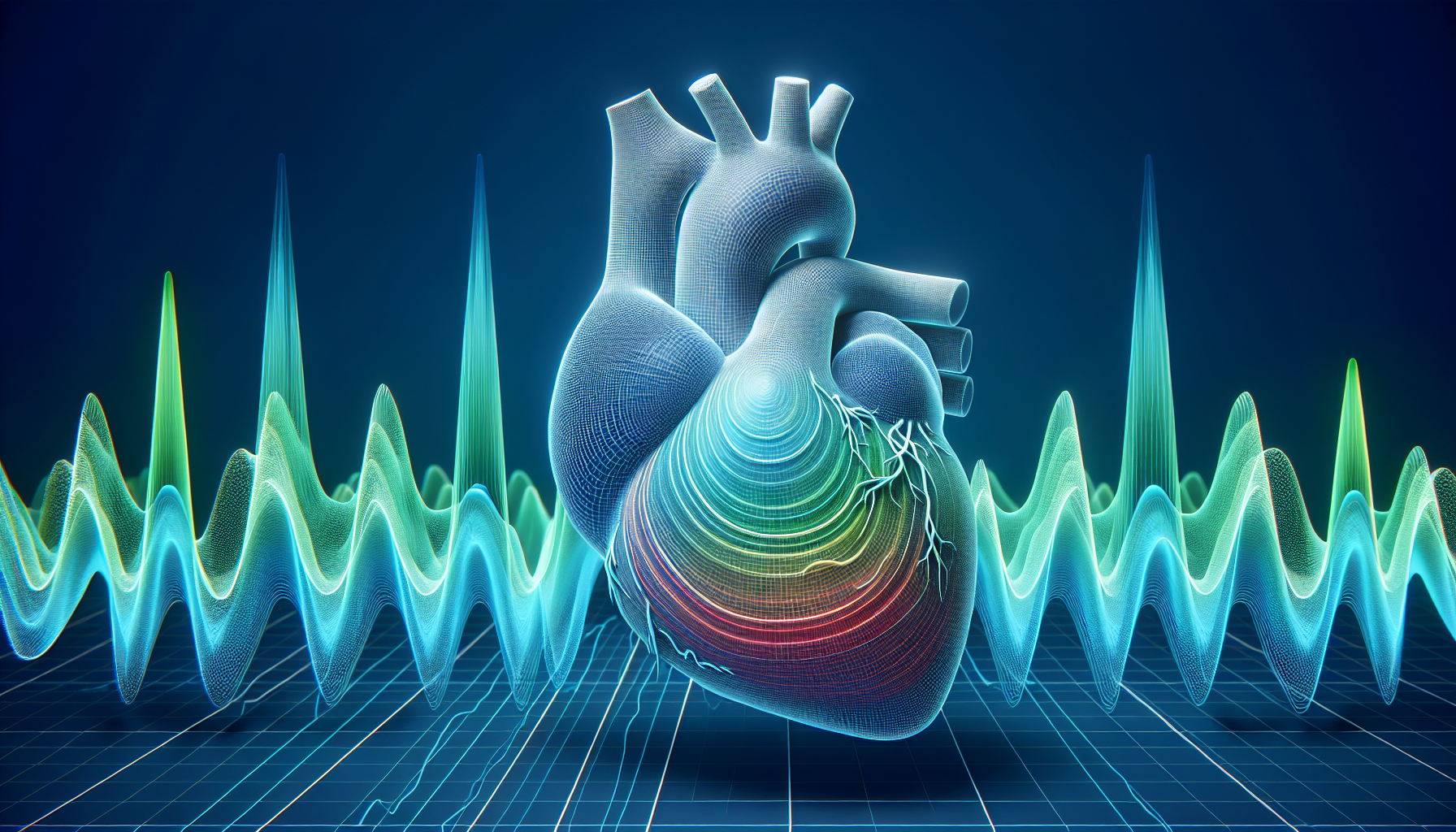Heart rate variability, or HRV, is an often underappreciated biomarker that can offer deep insights into our cardiovascular health and overall well-being. Unlike the constant rhythm that might be implied by the term ‘heartbeat’, our heart rate is not a metronome. It varies from beat to beat, and this variability is not random; rather, it’s a complex measure of our autonomic nervous system’s (ANS) ability to adapt to stress, physical activity, and even changes in posture.
Understanding Heart Rate Variability
HRV is the physiological phenomenon of variation in the time interval between heartbeats, measured by the variation in the beat-to-beat interval. It’s controlled by the ANS, which is comprised of two components: the sympathetic nervous system (SNS), which accelerates heart rate, and the parasympathetic nervous system (PNS), which slows it down. A higher HRV often indicates a healthier heart, as it reflects a more robust and responsive ANS.
Research has demonstrated that a low HRV is associated with an increased risk of developing cardiovascular disease and can be a predictor of poor outcomes in those who already have it. On the other hand, a higher HRV is associated with cardiovascular resilience and a lower risk of cardiac events.
The Significance of HRV in Cardiovascular Health
HRV is not only a tool for diagnosing health conditions but also a predictor of health outcomes. It can be particularly telling in the context of cardiovascular health, where it serves as an indicator of the heart’s ability to respond to stress. This responsiveness is crucial; a heart that can quickly adjust its rate to meet the demands of the body’s activities is a healthy heart.
Stress, both physical and psychological, plays a significant role in cardiovascular health. Chronic stress can lead to an imbalance in the ANS, skewing it toward sympathetic dominance, where the fight or flight response is overactive. This can cause a cascade of adverse effects, including high blood pressure, arterial stiffness, and inflammation, all of which can contribute to cardiovascular disease.
How HRV is Measured and Interpreted
HRV can be measured in various ways, typically through an electrocardiogram (ECG) or a heart rate monitor. These devices capture the R-R intervals (the time between successive heartbeats) and use algorithms to calculate the variability. There are several metrics for assessing HRV, including time-domain measures, such as the standard deviation of NN intervals (SDNN), and frequency-domain measures, which look at the distribution of power across different frequencies of heart rate oscillations.
Interpreting HRV data requires expertise, as it’s influenced by various factors including age, fitness level, and genetics. For instance, HRV tends to decrease with age, and athletes often have higher HRV than non-athletes due to their greater cardiovascular fitness.
HRV in Disease Prevention and Management
HRV has its place in disease prevention and management. For example, the role of Vitamin D in cardiovascular disease prevention has been explored, and studies have suggested that Vitamin D may have a positive effect on HRV and, by extension, on heart health. Balancing one’s diet with adequate Vitamin D, coupled with monitoring HRV, could be a proactive approach to maintaining cardiovascular health.
HRV also has implications in the management of conditions like arrhythmias. Identifying and managing cardiac arrhythmias in the elderly is critical, and HRV can be instrumental in detecting early signs of arrhythmia or in assessing the efficacy of treatments.
Lifestyle Factors Influencing HRV
Daily habits and lifestyle choices have a profound impact on HRV. For instance, managing lipid levels through diet and lifestyle can improve HRV, as a heart-healthy diet and regular exercise have been shown to enhance ANS function.
Sleep quality is another crucial factor. Poor sleep can lead to reduced HRV, which is a marker of increased stress and decreased parasympathetic activity. Conversely, good sleep hygiene can improve HRV.
Enhancing HRV for Better Health
There are various ways to improve one’s HRV, and by extension, their cardiovascular health. Engaging in regular physical activity, practicing stress-reduction techniques like meditation or yoga, and ensuring a balanced and nutritious diet are all effective strategies. Additionally, avoiding excessive alcohol consumption and smoking can have beneficial effects on HRV.
Technological Advances in HRV Monitoring
With the advent of wearable technology, monitoring HRV has become more accessible. Devices like smartwatches and fitness trackers can provide real-time HRV data, allowing individuals to track their own HRV and make informed decisions about their health.
Conclusion
Heart rate variability is a window into the state of our cardiovascular system and overall health. By understanding and monitoring HRV, we can gain insights into our body’s stress responses and make lifestyle changes that enhance our cardiovascular resilience.
In the quest for optimal health, HRV is a valuable metric that, when combined with other health indicators and strategies, can lead to a healthier, more vibrant life. As research continues to uncover the complexities of the heart and its rhythms, HRV will undoubtedly play a significant role in our understanding and management of cardiovascular health.
For those seeking to delve deeper into the intricacies of heart rate variability and its significance, there are numerous specialized resources available. The American Heart Association provides detailed information on heart health and related topics. More technical insights into HRV can be found in publications like "Frontiers in Physiology," which often features research on autonomic function and cardiovascular health. Additionally, the European Heart Journal offers peer-reviewed articles that sometimes explore the clinical aspects of HRV in various populations.
Understanding and harnessing the power of heart rate variability can be a key aspect of living a heart-healthy lifestyle. It’s a tool that, when used correctly, has the potential to inform, guide, and inspire a journey towards better health.



